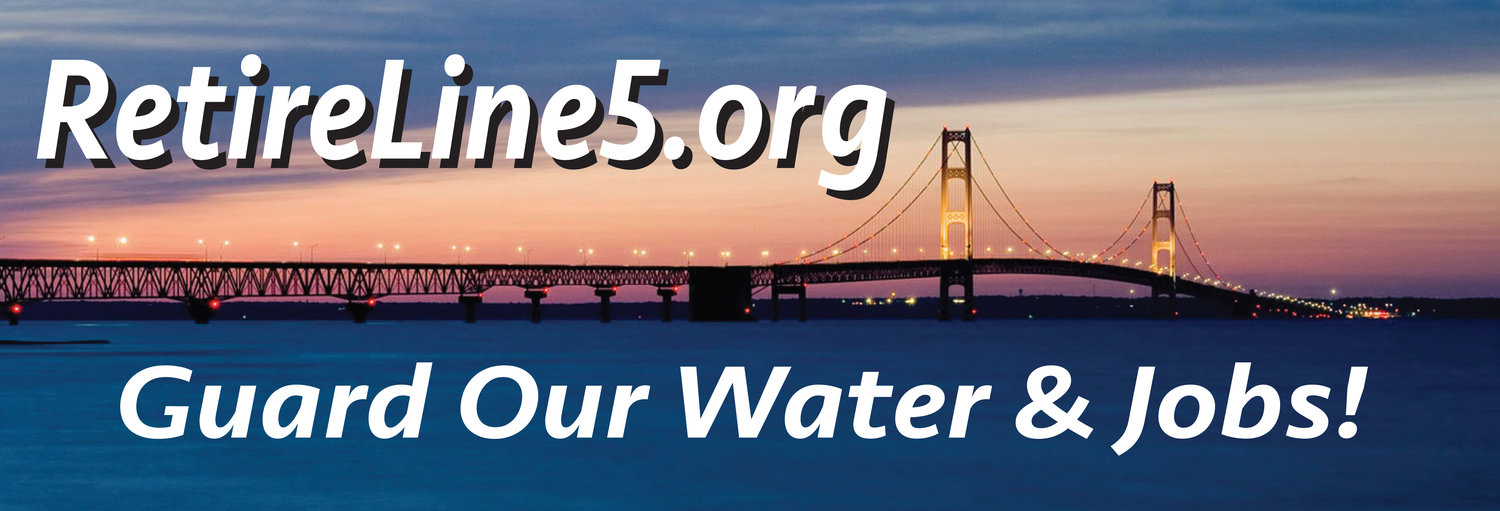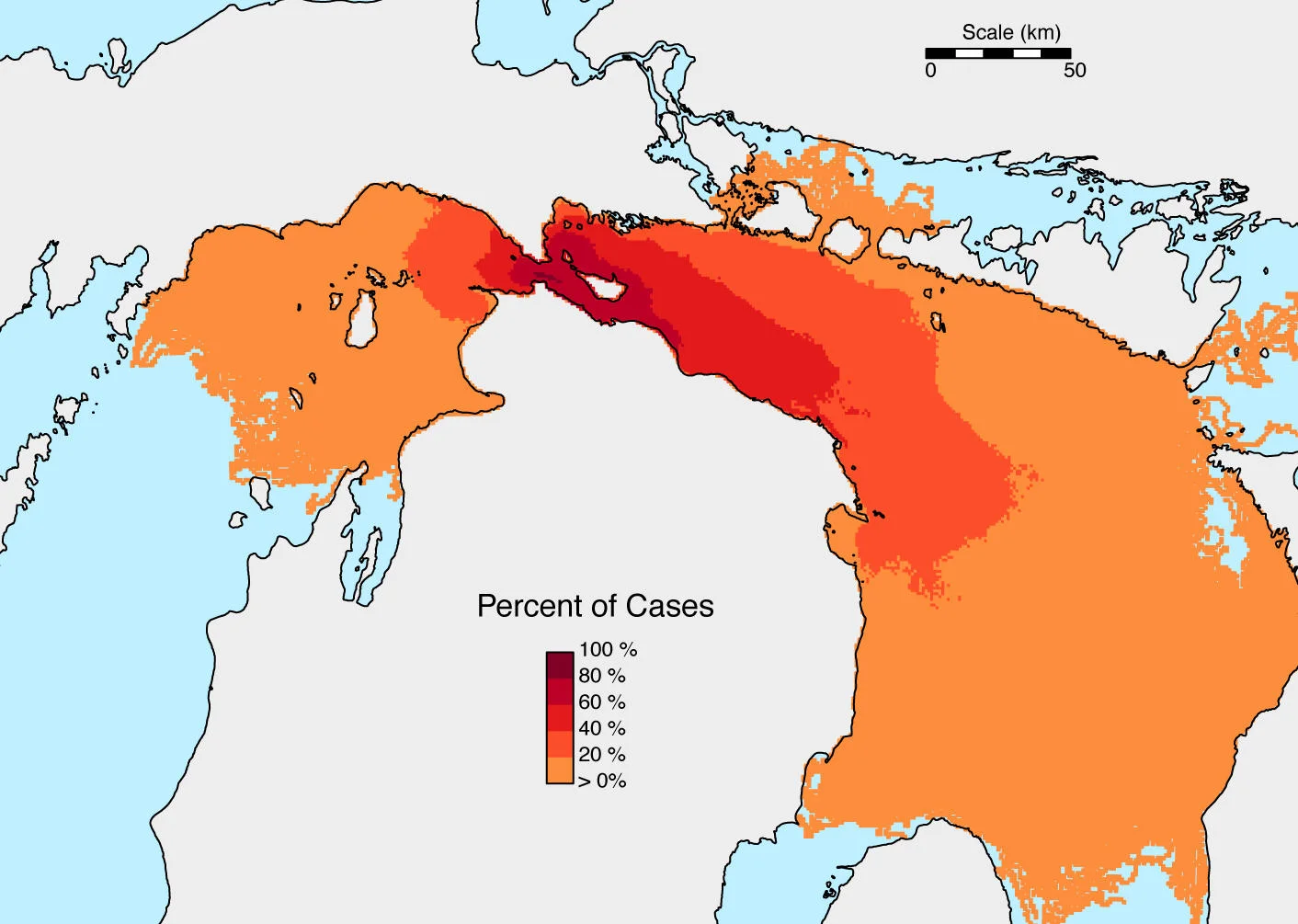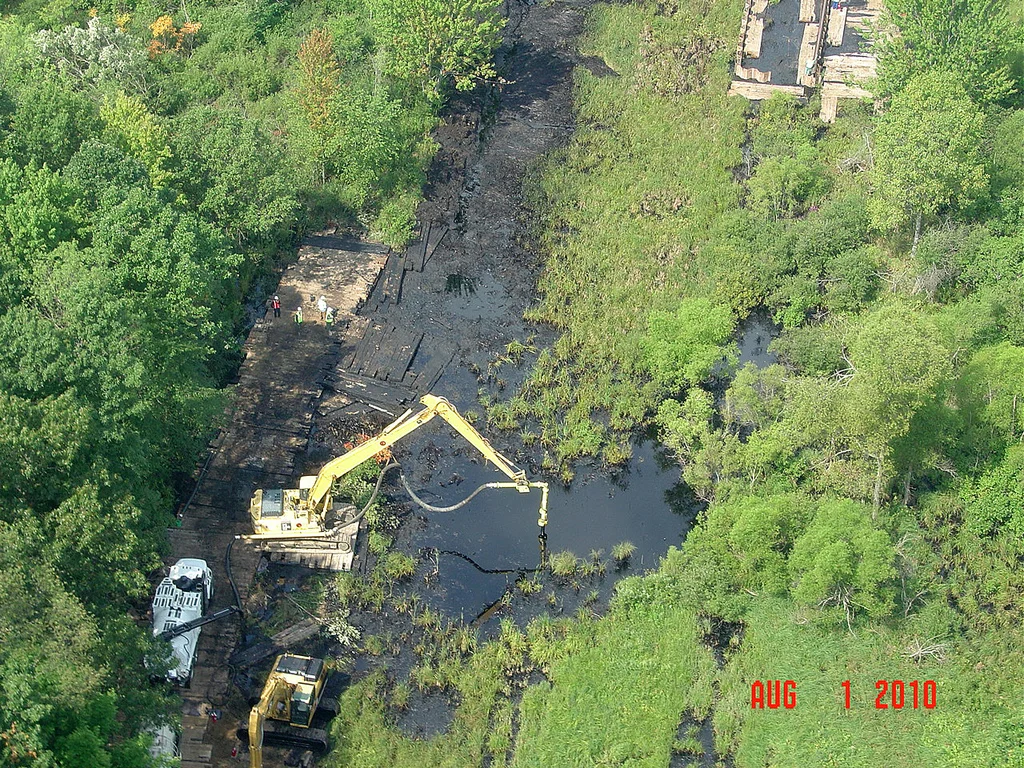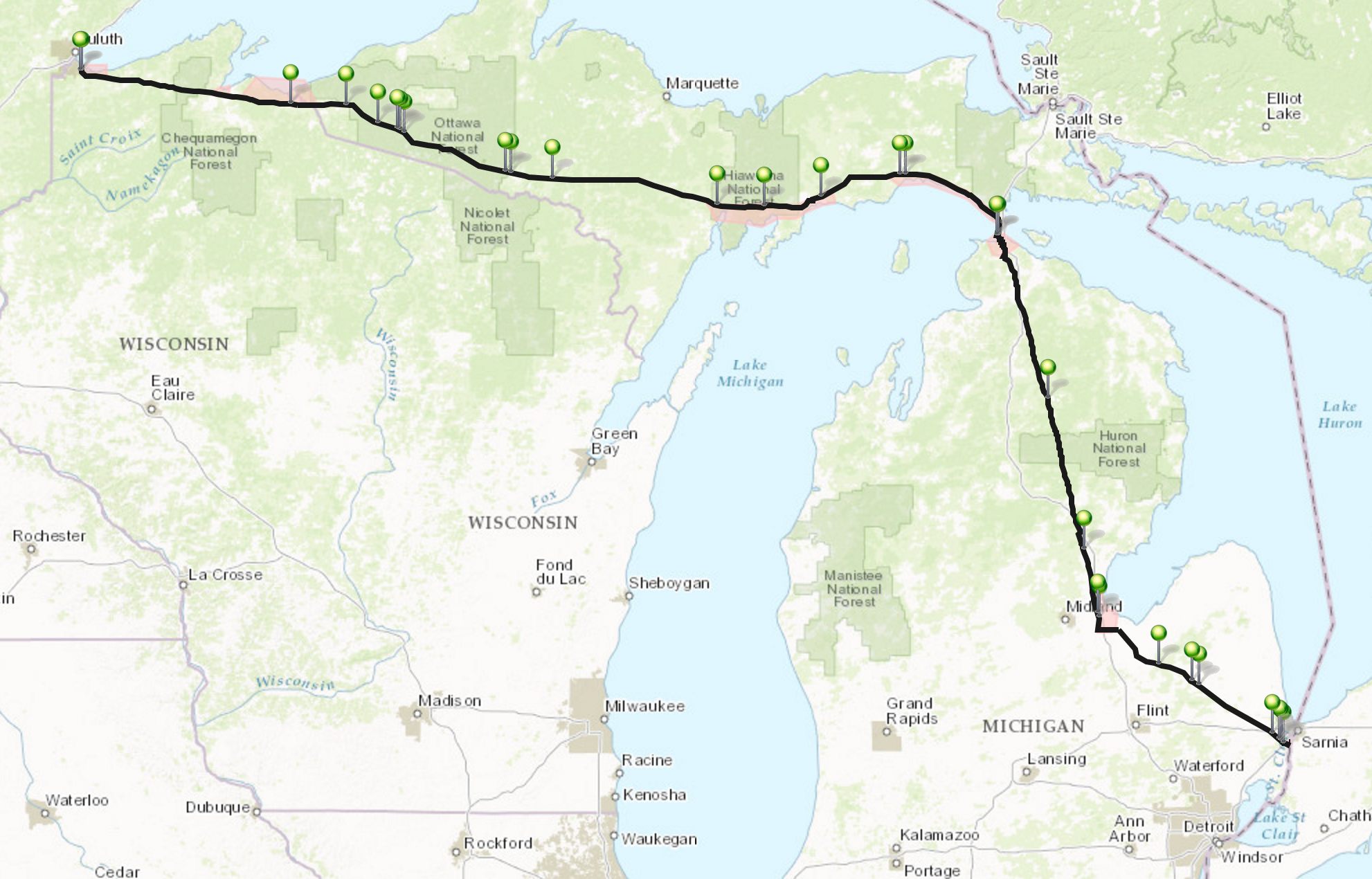What does Line 5 look like in the Straits of Mackinac?
Click on the short video to the right to see for yourself what this pipeline built in 1953 looks like. An anchor strike was identified as the principal threat to Line 5 in the Alternatives Analysis report presented to the Pipeline Safety Advisory Board Committee in July 2017. It's not hard to imagine an anchor getting caught on the pipeline. In fact, anchor drags have happened more than once. The risk of rupture increases as the pipeline ages. There is typically about 1 million gallons of product in the pipeline at any one time. The April 2018 anchor strike broke two electrical lines nearby and put 3 dents into Line 5 which further weakened Line 5’s structural integrity. On June 18, 2020 Enbridge disclosed undetected damage to Line 5 in the Straits caused by an unknown source which resulted in the temporary voluntary shutdown of both pipelines. Enbridge discovered this while they were repairing coating on the aging pipeline and were in the area.
Video of damage from the April 2018 anchor strike to Line 5.
What is so special about Line 5’s location in the Straits of Mackinac?
On its 645-mile shortcut through Michigan, Line 5 crosses through more than 23 counties and over 400 Michigan waterways. However, where Line 5 crosses the Straits of Mackinac is the most vulnerable. The map above details in dark red the areas that are impacted 100% of the time with even a small spill. Dave Schwab from the University of Michigan's Water Center 's report shows that "oil from a break in the Enbridge pipeline could impact the shoreline of Mackinac Island in as little as 9 hours. Oil could reach beaches as far as 10 miles east or west of the Straits within 24 hours. Over 700 miles of shoreline in Lakes Michigan and Huron and on their islands are vulnerable to contamination from a spill. I don't know of anywhere else in the Great Lakes where this could happen."
What is the history of Enbridge, the company that runs Line 5?
The Canadian company of Enbridge operates many pipelines in the U.S. Enbridge is responsible for the top 2 largest inland oil spills in the United States - Line 3 which broke in 1991 near Grand Rapids, Minn., spilling over 1.7 million gallons of oil, and Line 6B that broke and contaminated the Kalamazoo River watershed in 2010 with over a million gallons of oil per the EPA. The Michigan spill spoiled 35 miles of river and shore badly enough that they were closed for 2 years. It sickened numerous people, harmed wildlife, and resulted in more than 100 families moving permanently.
State and federal documents indicate that for years the Enbridge Line 5 pipeline under the Straits of Mackinac was out of compliance with easement rules that govern how far the twin pipes can span the lake bottom unsupported. Although Enbridge's 1953 easement with the state of Michigan specifies the pipeline must have anchor supports across any gaps in the lakebed span greater than 75 feet, a 2003 survey identified 16 unsupported spans greater than 140 feet, with the longest being 224 feet on the east pipe and 286 feet on the west pipe.
What is the spill record on Line 5?
According to data from the Pipeline Hazardous Materials Safety Administration, Line 5 has already experienced at over 30 spills since spills started being recorded in 1968. These oil spills have released more than 1 million gallons of oil and natural gas liquids. Of the recorded spills, only one was listed as detected by a remote pipeline detection system. Click on the map to the left to go to National Wildlife Federation’s interactive map to understand where and what has been spilled from Enbridge Energy’s pipeline system, the repair methods that have been used, and how leaks and defects are being discovered.
What is in it for U.S.?
While the risk to our Great Lakes is enormous, the overall benefit to the U.S. is small. Line 5 originates in Canada and after crossing through Wisconsin and Michigan returns to Canada for Canadian profit to be made. There is some propane that is used in Northern Michigan and a small amount of product that Michigan adds to the pipeline, but the vast amount of what passes through Line 5 benefits Canada and their foreign customers.




